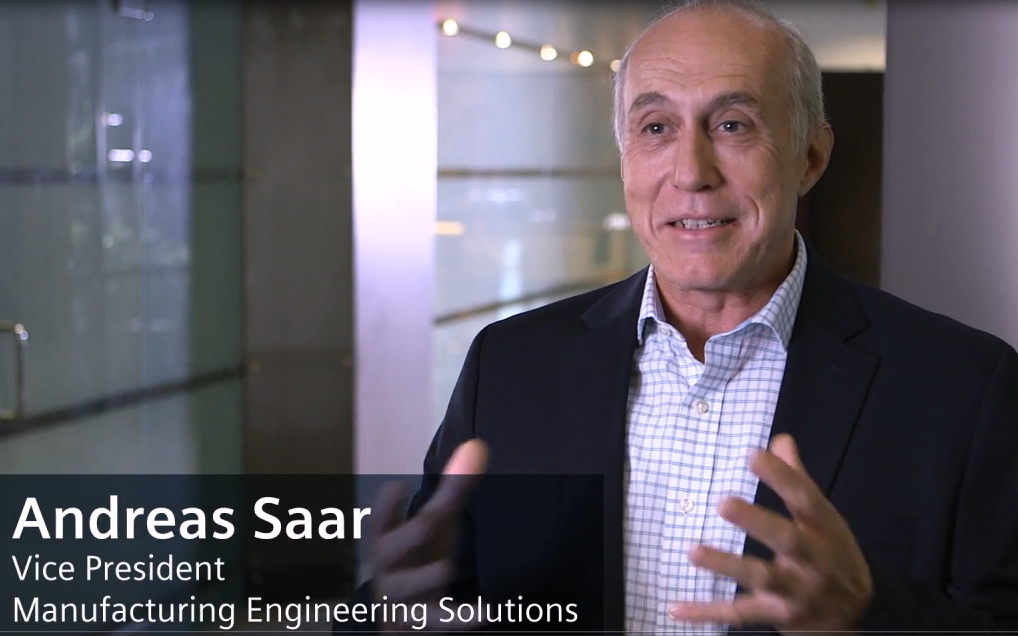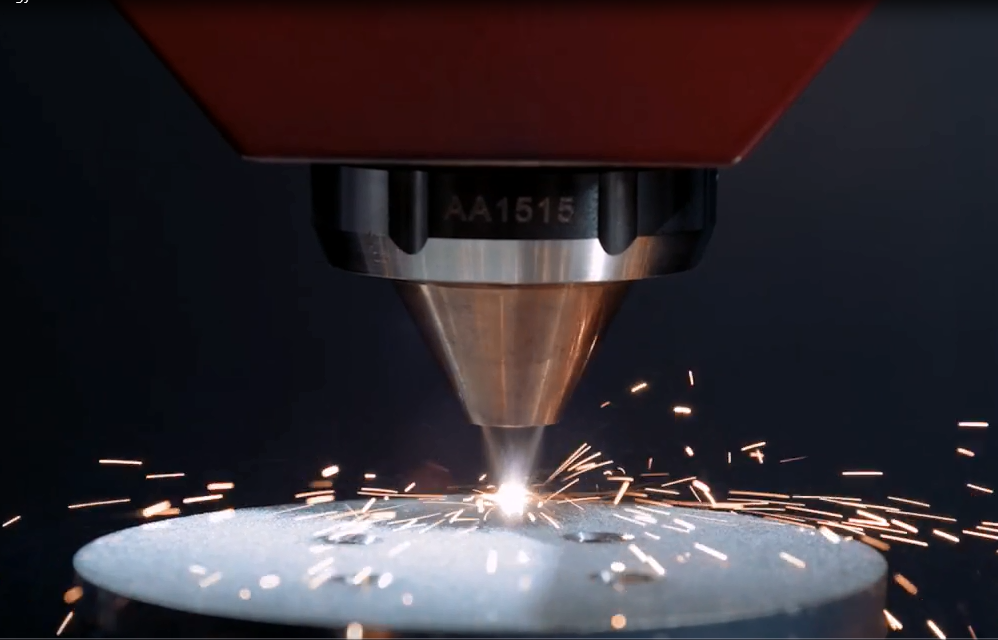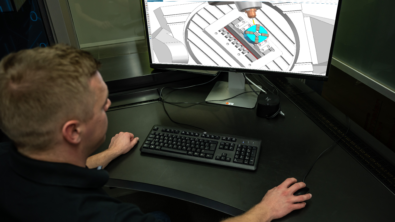Q&A with Siemens’ Andreas Saar: Hybrid Additive Manufacturing – The Next Generation Manufacturing Technology


Q&A Interview with Andreas Saar, Vice President – Manufacturing Engineering Solutions, Siemens PLM Software
Hybrid Additive Manufacturing – The Next Generation Manufacturing Technology
What is hybrid additive manufacturing and what are the benefits?
We define hybrid additive manufacturing as combining additive manufacturing (aka 3D printing) and subtractive manufacturing methods to build finished parts in one environment. By building up complex geometries, including internal cavities or lattice structures, and then machining them for tight tolerances on all functional faces as the parts are built up, new classes of parts can be manufactured and multiple setups may be consolidated into one. Generally we can distinguish between three classes of parts: prototype, production and repair.
- Prototype (or functional prototypes): This is the area where 3D printing or additive manufacturing is traditionally used and still considered a primary application.
- Production: More and more companies exploring opportunities to create production parts with Additive or Hybrid technology to reduce weight or gain performance while keeping a high degree of flexibility and time to market.
- Repair: By combining metal deposition and traditional metal cutting into one machine environment, repair and refurbishment of parts particular in the aerospace industry is growing and allowing for a highly simplified process.
In the traditional way of part manufacturing, material is purchased with exact specifications from a vendor. Hybrid manufacturing allows companies to create their own material recipes. They can buy or create different combinations of powders, conduct their experiments to test metals, create their own recipe of metals, and produce parts with better performance targeted to their needs. Additive manufacturing technology will become a huge opportunity for research on the material engineering side allowing companies to introduce competitive differentiators with their products.
Hybrid manufacturing eliminates the deficiencies of a pure additive manufacturing system. First it uses a powder deposition, versus powder bed technology which is substantially faster, deposits material only where needed. It creates excellent material quality in terms of density and has the opportunity to work with multiple or graded powder material. Secondly, a major advantage is that manufacturers can immediately, in the same set-up, machine the functional surfaces to complete the part for final use. The current Hybrid Manufacturing systems are built on the basis of mature multi-axis systems which allow the building of part features in any direction. Therefore, there is no need for building complex support structures saving time and material. There are many advantages to Hybrid Manufacturing including a larger build size, but also limitations with this technology as to what parts cannot be manufactured (e.g. fine graded structures).
How will hybrid technology work within Siemens NX software?
NX will provide users the tools that allow the design of additive manufacturing parts, and lightweight structures, liberating designers from traditional processes and providing innovation and increased freedom in the process of designing new products. Next, we bring computer-aided engineering (CAE) into additive manufacturing to calculate topology optimization and the impact of heat distribution while building up the product. Users will have CAE tools which are adapted to additive manufacturing and allow layer by layer analysis and adaptation of the process. This is totally new way of utilizing this engineering technology in the build process of a part.
Then, into the part manufacturing process, the user works on a feature decomposition model. Subsequently the user can define the additive process parameters for each feature created in that process as well as the subtractive or finishing operation to complete the part. The system semi-automatically combines these features in the proper sequence, and allows alternating between additive and subtractive operation to manufacture the part. This process provides a lot of flexibility and is a completely new technology.

Which industries can benefit from hybrid manufacturing?
To start, aerospace and defense can benefit from hybrid manufacturing because they typically have one-off or small series but highly complex parts. The technology plays very well because many parts don’t require mass production, undergo a high frequency of engineering changes and the process is typically faster (e.g. no casting). With this technology, companies will be able to reduce part production time from a few months down to a few days, speeding up time to market. It not only reduces the production time but also reduces material that is machined from a component by building near-net shapes using the additive process. As a matter of fact, in aerospace a large percent of material is wasted because material has to be machined away to shape the final part. Additive manufacturing technology allows creation of net shape raw parts with final machining of functional faces only. Hybrid technology creates the possibility to manufacture parts industries couldn’t manufacture before.
Medical is another industry opportunity. For example, instead of using predefined metal titanium parts for hip replacements, manufacturers could use hybrid technology to create personalized parts as needed matched to the to the physiology and bone structure of the patient.
Hybrid manufacturing will also benefit companies anywhere that have a need to create a part immediately for complex repairs, and don’t have an easy way to get to it. They don’t need to store spare parts; they can simply build when and where needed.
Why do you think hybrid manufacturing is so important?
The trend in the market is going toward using a combination of technologies in a one environment. We see more and more that different technologies are combined in order to complete parts in one process step. In the past, many machines were required and manufacturers had to move parts many times from set-up to set-up introducing quality issues. Hybrid manufacturing is a change in how people think and how they can produce in the future. They can transform an idea into products within only a couple of hours. Additive and Hybrid manufacturing will change how products are made.
Think it. Model it. Make it.
We can now go from an idea, to the design, and to the production much faster creating higher performing parts that meet unique needs. That is a game changer.
To hear more about Andreas Saar’s insights on hybrid additive manufacturing, view his new video, “Hybrid Additive Manufacturing: A Game Changer.”
You can also learn more about Hybrid Additive Manufacturing on our website.

![Siemens NX CAM software powers precision in electric vehicle part manufacturing [article]](https://blogs.stage.sw.siemens.com/wp-content/uploads/sites/15/2024/04/American-Machinist-1-395x222.png)
![Siemens leads collaboration for advanced EV component manufacturing [article]](https://blogs.stage.sw.siemens.com/wp-content/uploads/sites/15/2024/03/erod-_SME-395x222.png)